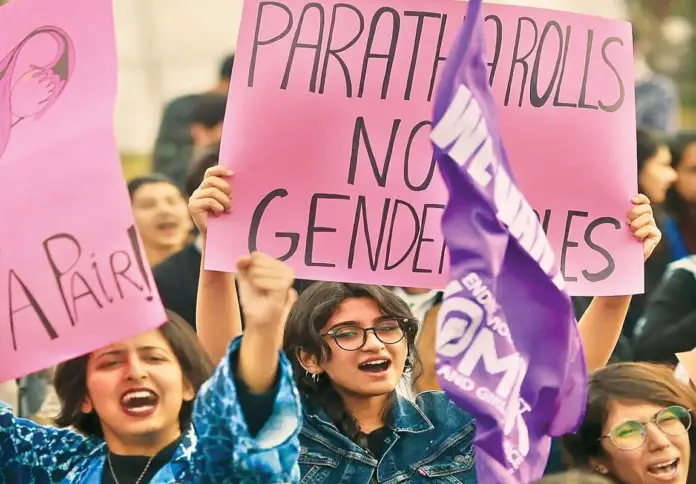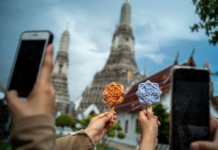International Women’s Day has been observed since the early 1900s, which was a time of great turbulence in the industrial world that was witnessing booming population growth and the rise of radical ideologies. In 1911, International Women’s Day was honored for the first time in Austria, Denmark, Germany and Switzerland on 19 March. Between 1913 and 1914, women in Russia observed their first Women’s Day on February 23. Later, it was decided that March 8 can be the globally accepted day to celebrate IWD. The first women’s day celebration took place in Chicago on May 3, 1908. Organized by the US socialist party, it brought together an audience of 1500 women who demanded economic and political equality, on a day officially dedicated to “the female worker’s cause”. The second international conference of working women was held in Copenhagen in 1910. Clara Zetkin, the leader of the women’s office for the Social Democratic Party in Germany proposed the idea of celebrating international women’s day every year in every country.
UNHCR, the UN Refugee Agency marks International Women’s Day in Pakistan with a number of activities jointly organized with refugees, UN Women and other partners. Every year, International Women’s Day is celebrated on March 8 to spread the message of gender equality and to work together in making a better society where there is no gender bias. This year, the United Nations declared the theme of the day as – Gender equality today for a sustainable tomorrow. Imagine a gender equal world. A world where bias, stereotypes and discrimination have no place. That’s the kind of equitable world International Women’s Day 2022 aims to bring about. Marked annually on March 8, International Women’ Day is one of the most important days of the year that celebrates women’s economic, social, cultural and political achievements and rallies for their equal rights. Every year, International Women’s Day celebrates a different theme.
This year, the campaign calls for ‘Break the Bias’. A level playing field is essential to allow women to move ahead in their respective fields. Whether deliberate or unconscious, bias makes it difficult for them to do so. Campaign themes over the years have included: ‘ChooseToChallenge’, #EachforEqual, #BalanceforBetter, #PressforProgress, #BeBoldforChange, #PledgeforParity, #MakeItHappen, #TheGenderAgenda and more. UN Women is calling for climate action for women this year. “Across the world, women depend more on, yet have less access to, natural resources, and often bear a disproportionate responsibility for securing food, water, and fuel. With the latest data, we now understand the vital link between gender, social equity and climate change, and recognize that without gender equality today, a sustainable future, an equal future, remains out of reach,” read a statement by the UN body. The official colors of International Women’s Day are purple, green and white. Purple is for justice and dignity; green symbolizes hope and white is for purity.
How can you get involved? Want to show your support for women? Here are a few activities you can participate in this International Women’s Day.
Strike the #BreakTheBias pose
You can show your support for women all around the globe by crossing your arms and clicking a picture. Strike the International Women’s Day pose and share your #BreakTheBias picture on social media with the hashtags #IWD2022 #BreakTheBias to encourage others to also commit to forging an equitable world.
Attend the Aurat March
Aurat March is an annual socio-political demonstration that takes place in different cities of Pakistan on March 8. Women and their allies gather in Karachi, Lahore, Sukkur, Hyderabad, Islamabad and Peshawar to rally for equal rights. The march manifesto demands economic justice, including implementation of labor rights and the Protection Against Harassment of Women at the Workplace Act, 2010, recognition of women’s unpaid contributions to the “care economy”, and provision of maternity leave and daycare centers to ensure women’s inclusion in the labor force. Every year, the march is criticized for its slogans and pro and anti-march sentiments are covered widely by mainstream and social media. Therefore, it is possible to see that the women’s march could both be a courageous challenge to certain retrograde men and violent practices while also being a little more than a one-off event that has little influence over Pakistani politics. Patriarchy and male dominance are part of Pakistani society and strengthened by the state, in various ways. The bitter truth is that countless men and women across Pakistan believe in the same ideology that has been inculcated in the public’s minds for decades: that women should submit to men. Some men and women justify violence. The women’s march was attacked and their murals were defaced in Islamabad before the event. The march of the urban feminist movement was attacked from all sides including the religious, right-wing, the state, media, and sexist sections of society.
The women’s march may have challenged some settled beliefs but to genuinely transform Pakistani politics the movement must include all women. Indeed, progressive, left-wing, secular nationalists, working-class and liberal women have their work cut out for them. Statistics show that overall progress in reducing the gender gap is stagnant in Pakistan in four areas: economic participation and opportunity; education attainment; health and survival, and political empowerment. In other words, women in Pakistan are faring badly to men in these four dimensions of the gender index. The report also pointed out that women in Pakistan do not have equal access to justice, ownership of land and non-financial assets or inheritance rights. Crimes against women in Pakistan cut across classes and are driven by various factors such as religious conservatism, loopholes in women-centric laws, lack of employment and educational opportunities, blatant misogyny against women by political leaders, among others.
Therefore, this year’s International Women’s Day or IWD, which falls on March 8, is a day of reflection rather than celebration. According to new data, at the start of the lockdown, almost 56 percent of women in the region who previously worked are unable to do so anymore, and 21 percent lost their jobs entirely. As the lockdown ended, women returned to economic activity at a substantially slower rate than men. Bias, whether deliberate or unconscious, makes it difficult for women to move ahead. It is not enough to recognize bias; action is required to level the playing field. Countries need to devise policies to end the bias so that women can prosper in different walks of life. Some actions that should be taken to further empower the women include raising your voice and supporting each other. Human rights are women’s rights so, know your rights, educate your next generation, establish a high-level corporate leadership team dedicated to gender equality. At work, treat everyone fairly, respect and encourage non-discrimination. Pakistan needs a sustained and intersectional women’s movement to challenge the system and change the country’s mindset. In the words of Malala Yousufzai, “When the whole world is silent, even one voice becomes powerful.”







